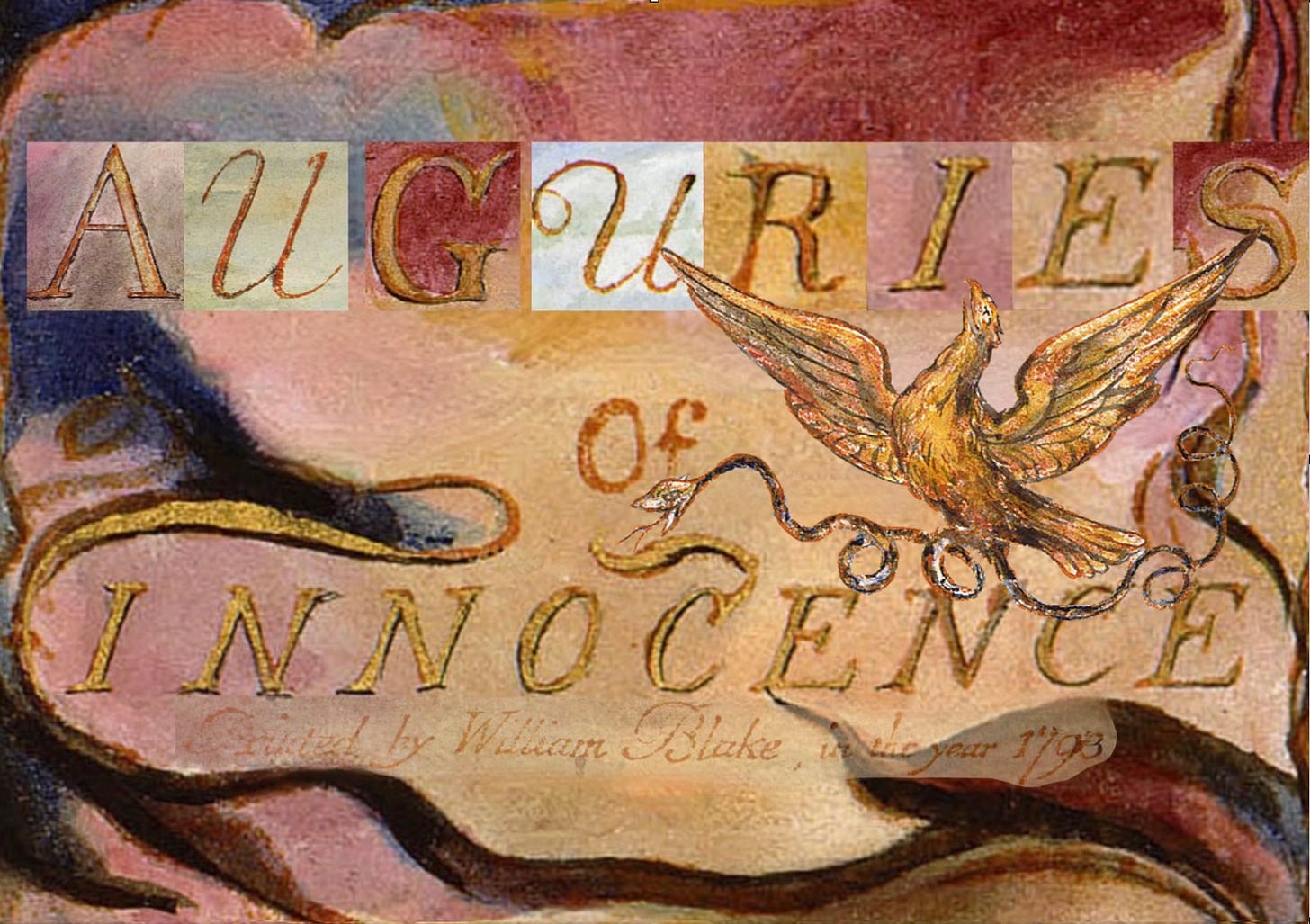Introduction: Auguries and the Politics of Poetry
In his fascinating discussion with Henry Eliot earlier this year (‘On the Road with Penguin Classics’, February 2024), author Philip Pullman strikingly described Blake’s poem the Auguries of Innocence as ‘one of the greatest political poems in the language’.
The observation’s striking because the poem is probably best known for its opening lines about seeing ‘a World in a Grain of Sand/ And a Heaven in a Wild Flower’, and its closing lines about perception - about how ‘We are led to Believe a Lie/ When we see not Thro the Eye’, for example. But Pullman is right: between these opening and closing verses lie some of the most immediate and trenchant observations about our relationship with the world and our dysfunctional treatment of animals, life, and each other that Blake perhaps ever wrote.
A dog starvd at his Master's Gate
Predicts the ruin of the State
A Horse misusd upon the Road
Calls to Heaven for Human blood
Pullman recites the line about the starved dog, adding: ‘That is a wonderful couplet. This is connecting small things with great things - saying, “if you can’t look after your dog, how can you look after a country?” It’s immediate’, he observes. And then for me the killer observation - and the one that in fact sparked the whole idea for this post. Pullman cites Blake’s equally arresting image of ‘The Whore & Gambler by the State / Licencd build that Nations Fate’, applying it to a very recent, and very specific - ‘particular’ in Blake’s terms - example:
I remember under Blair’s government, they were considering licensing – not brothels, but casinos. And they did. ‘Gambling – wonderful thing, gambling! – let’s have a lot of it!’ There was a picture of Tessa Jowell I think, the minister responsible for this, shaking a pair of dice in a sort of inviting way over a – whatever it was – craps table or roulette wheel or something, and I thought of this couplet then. ‘What are you doing? Have you thought this through? What are you doing – are you licensing gambling?’
The power of linking Blake’s lines with contemporary instances and images seemed too compelling to resist. So the second half of this post will consist of an Illustrated Commentary or visual exploration of Blake’s poem, providing illustrations to accompany each of Blake’s arresting couplets - including one of Tony Blair and Tessa Jowell as the ‘Whore & Gambler ‘ that Pullman originally envisaged.
(By the way, this idea of providing images for Blake’s text will I hope be of some interest in itself. Blake illustrated or ‘illuminated’ many of his major poems (of which Auguries must surely be counted - Northrop Frye called it one of ‘Blake’s most important poems’), but sadly not this one. The manuscript for it, written out in fair copy (and seemingly therefore intended for publication), was left unillustrated - and indeed unprinted and unpublished for some sixty years after Blake originally penned the lines, when they finally appeared in an edition of Songs of Innocence and Experience, with Other Poems, edited by R. H. Shepherd in 1866. Over 150 years later still, in 2023, a commentator for the Blake Society wondered:
We can only speculate about what ‘Auguries of Innocence’ would have turned out to be; had Blake decided to transfer the work onto copperplates. The possibility of an alternative – etched and illuminated ‘Auguries of Innocence’ pushes the idea of reception into the foreground. I have to admit that the idea of ‘Auguries of Innocence’ in illuminated printing haunts me. I will never know what it would have looked like.
It would of course be wonderful to have Blake’s ‘illuminated printing’ of the poem - indeed, perhaps the Blake Society might one day invite contemporary artists to provide new illuminations for the work, as the poem is so obviously modern and resonant in its ecological emphasis. But I’m hoping that the present imagining can be a start, or a spur to engaging with the poem in a visual, as well as a simply verbal, way. The images also I feel help the reader to slow down a little while taking in Blake’s intense couplets, which otherwise can feel almost overwhelming. I am also including a short video, simply called ‘AUGURIES’, at the end of the post, to accompany the visual illustrations.)
Keep reading with a 7-day free trial
Subscribe to Golgonooza to keep reading this post and get 7 days of free access to the full post archives.




